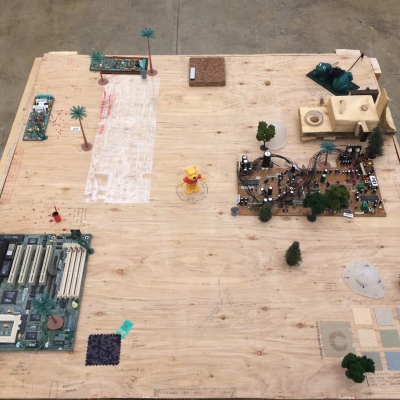
I see this work as an iteration in an institutional critique of whiteness that takes as it’s starting point Michel Foucault’s thesis in Society Must Be Defended that war, or the invocation of war or battle in ostensibly socially neutral but insistently, voyeuristically privatized institutional contexts, is the best proxy for the exercise of power in contemporary society. It visually explores Foucault’s analysis of how the Trojan myth has endured and been assimilated into the history of European nations before the discourse of race struggle was turned into the colonial discourse of race purity.
Rather than reducing the scope of its critique to the juridical and formally representational context in which white people have historically exercised racialized rights—white privilege—this work is assembled out of combinations of objects, images, and drawings that question discourses and rhetoric by which whiteness has been asserted, reproduced, and maintained as a norm behind the scenes. It provides a counter-narrative in which we can imagine an episode of that myth in another way: a battle for something else.
It includes drawings of Calvin and Hobbes speculating about the pitfalls of investing in fictional sports teams, a printout of an airplane dropping seeds evocative of a line by Walter Benjamin about how “seeds from airplanes” could be dropped for harvest routinely if it wouldn’t disturb class antagonism, a decorative printout of Christ next to grafitti, framed notes from ransom generators with cryptic references to the absurdity of inheritance laws, white-board questions about human nature, stone molds for reproducible statues, candles, and books about literary fiction and theory, and a dioramic map of city regions and suburbs.
It was displayed together with the movie Engendering:




